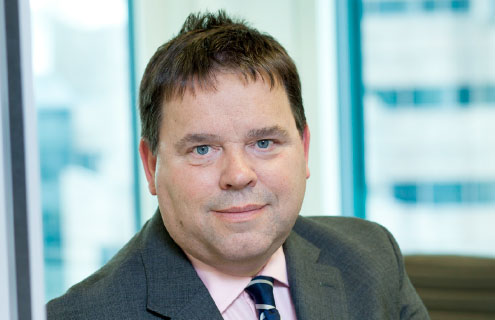Crawford & Company
Crawford & Company’s Benedict Burke believes that captives should consider the customer journey when settling claims made against them
What is the key to successful claims management for worldwide captive programmes?
The key to successful claims management for worldwide captive programmes is in the collection of accurate data, pursuit of recoveries and ultimately the protection of businesses and brands.
With every passing year, the actions of captive insurers behind global brands become increasingly influential.
Their acquisition of claims data over time means those subtle changes to an organisation’s risk profile can be made, helping to reduce exposures and allowing the business to move with the times.
This can be seen in the removal of hazardous revolving doors at hotels or sharp edges at the dining tables of chain restaurants.
Do you manage claim needs in multiple locations around the world?
As a global third-party administrator (TPA), Crawford’s TPA business, Broadspire, supports businesses around the world with its claims handling.
By nature, businesses want to keep administration light and this means we can pick up the slack for them when claims occur. The most obvious example is in how first notification of loss is handled.
We act as the local insurance manager, but operate a lean system to ensure data collection is the immediate priority after the safety of employees, customers and property.
Collecting information as quickly as possible after an incident has occurred means that data can be aggregated and leveraged to make strategic decisions, helping risk managers to reach that elusive ‘single version of the truth’.
Of course, no system is perfect, but without a uniform and systemised approach the process will be flawed and claims defensibility rendered much weaker.
What types of claims do you work with?
Broadspire TPA manages the entire range of claims from personal injury, property damage, business interruption, right through to reinsurance.
How do the claims needs of captives differ from traditional insurers?
From the most obvious standpoint, they have only one ‘customer’ and as such the captive is an extension of the business itself. Captives should be considering the customer journey when they settle claims made against them, particularly when a TPA is acting on their behalf.
Does the corporate provide authorisation for the TPA to use assets that are unique to that brand as a means of compensating people in addition to a financial settlement? If the claimant was a guest or a paying customer, they clearly wanted to associate with the brand in some form before their loss, so equipping your claims teams with benefits, goods or services can really enhance the journey for everyone.
How do you work with captive insurers to reduce unnecessary claims and the associated costs?
There are many approaches that can help reduce unnecessary or attritional claims, and it very much depends on the nature of the organisation.
If the captive is responsible for insuring staff and property in a manufacturing context then we would seek to implement more stringent health and safety risk management programmes, supported by robust data collection of insured and uninsured risk at first notification of loss.
If the business had a more significant ‘shop window’ exposure with public liability risks, the emphasis would be on maintaining a safe environment for customers and so on.
Essentially, we always advise a robust stewardship programme that is aimed at constant improvement.

.jpg)



